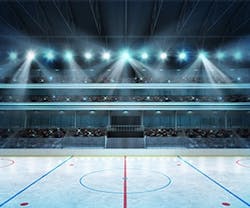NHL Venues Becoming Sustainable
The usual fight in a National Hockey League game will send its combatants to the penalty box for a few minutes, but the gloves-off fisticuffs against climate change taking place in multiple NHL arenas have provided some major energy and sustainability savings for their facilities.
Six venues in the NHL have invested in LED lighting and other energy efficient solutions. This year was especially noteworthy for fans of both sustainability and hockey as both teams competing in the 2016 Stanley Cup Final, the Pittsburgh Penguins and the San Jose Sharks, play in two of the six energy efficient venues.
The San Jose Sharks’ SAP Center became the first ever major sports facility to use fuel cells as supplemental electricity. Their new technology has netted them the replacement of roughly 25% of their electricity usage on game days, which will reduce the facility’s carbon footprint by 4.8 million pounds of carbon dioxide within 10 years.
Having installed energy efficient lighting and a new HVAC system, the Pittsburgh Penguins’ Consol Energy Center scored the first LEED Gold certification in the NHL and is one of only a handful of sports facilities in the United States to receive such a distinction. The Penguins’ home also incorporates other sustainable features, including recycled and local construction materials, as much natural lighting as possible, and water-efficient plumbing.
The NHL hopes to make these kinds of strides not only throughout the entire league, but also throughout the sport itself. These changes towards more sustainable solutions are part of the NHL Green program, which has a goal of reducing the resources used in hockey facilities all the way down to the local level in order to reduce the sport’s environmental impact and make the game more affordable.
Other initiatives the NHL Green program has established include reducing food waste, conserving water and restoring natural water sources, and Green Week, where teams share their own green programs.
